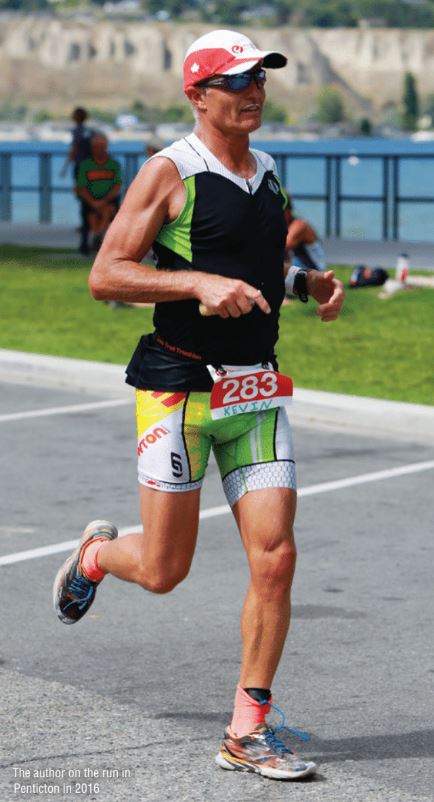Lessons in consistency – 100 runs in 100 days
On Global Running Day it seems all-too-appropriate that we examine what contributor Kevin Heinz learned during his three-month-plus running challenge
 Photo by:
Getty Images
Photo by:
Getty Images
As triathletes, we strive to be the best we can, but often life gets in the way. We have to change our plans. We have to compromise. Our potential gets buried beneath late nights at the office and even later nights with children. What if you were able to commit to one single thing over three months without any disruptions? How good could you get?
Over the winter, I was fortunate enough to answer that question. I committed to a challenge; 100 runs (30 minutes minimum) in 100 days. I’ve been running consistently for decades, but never more than 5 days in a row. The challenge – lasting from November to February – was the perfect tonic to remedy a case of Covid-induced complacency.
Years ago I would have never done this. I was too insecure and never deviated from my successful training formula. As I approach 60, though, I’m open to risk and I thought that even if this adventure didn’t make me faster, I would learn something valuable.
Like most triathletes, I’ve had my share of unplanned disruptions due to injury, including one about about ten days before the start of the challenge. The x-ray revealed nothing but a bruised foot, so I took a week off from running and then jumped into the challenge. My first few runs were very slow, just to make sure I was fully healed.
My most common method of self-sabotage is running too hard, so during the challenge, I listened to my body more carefully than ever. If my form wavered, I backed off. The only near-injury I had during the 100 days was from running too quickly on a steep downhill. My recklessness was rewarded with a minor case of shin splints.
Halfway through the challenge, I celebrated the start of Christmas holidays by running a marathon on my treadmill. Things were going well until heavy snow caused a power outage. I ended up running the last three miles on icy roads and slushy sidewalks.

Since my goal in the challenge was just to finish it, about 75 per cent of the runs were at my Ironman pace. The slow and sensible approach worked as I completed the challenge motivated and injury-free. Buoyed by my success, I continued running every day and took chances to see what superhuman fitness I developed. For run number 105, I ran another marathon on the treadmill. It was a good news/bad news result: my speed was no better than my Christmas marathon, but my recovery time was incredibly quick.
Having finished the challenge I had a chance to reflect on what I learned from doing it. Here are the four main points.
- It’s a matter of balance. Even though I successfully completed the challenge, doing so didn’t turn me into a Peter Reid on the run course. Although my running became faster as a result of the challenge, it isn’t faster after a hard bike. It seems that for triathletes the best formula for success is a finding your own most effective balance of swimming, biking, and running.
- Practice makes perfection closer. As a coach, I remind athletes to be mindful as they run. One of the benefits from doing the challenge was just how easy being mindful became. By running every day, I could quickly tune into my pacing, breathing, and form. It just became automatic. Being so in tune with my body helped me complete the challenge by preventing any injuries from creeping up.
- Are days off of exercise needed? This is another axiom that the challenge made me think about and, in my case, the answer is no. The caveat is intensity. With a diet of low-intensity runs on a variety of terrain, I avoided physical injury and mental burnout. Never did I dread my next run and while running, I never thought “I just want to get this run/this challenge over with.” Furthermore, I really enjoyed “just running” without being bound to a specific distance or pace, as long as I ran the minimum of 30 minutes. The freedom from structure was refreshing. I suspect if my runs were harder every day, or the challenge was for a minimum of an hour a day, things would have been different.4. Something’s Gotta Give Completing the 100 runs in 100 days challenge was a major accomplishment for me and, like anything else of worth, took commitment and sacrifice. An online forum participant who had done it before commented, “When you try something like this, it takes dedication, and something’s got to give.” That became my mantra because it wasn’t the running that was difficult, it was the time away from swimming and cycling. As much as I pined for the pool or an afternoon in Watopia, my commitment to the bigger goal prevailed and at the end of the 100 days challenge, it was worth the sacrifice.
